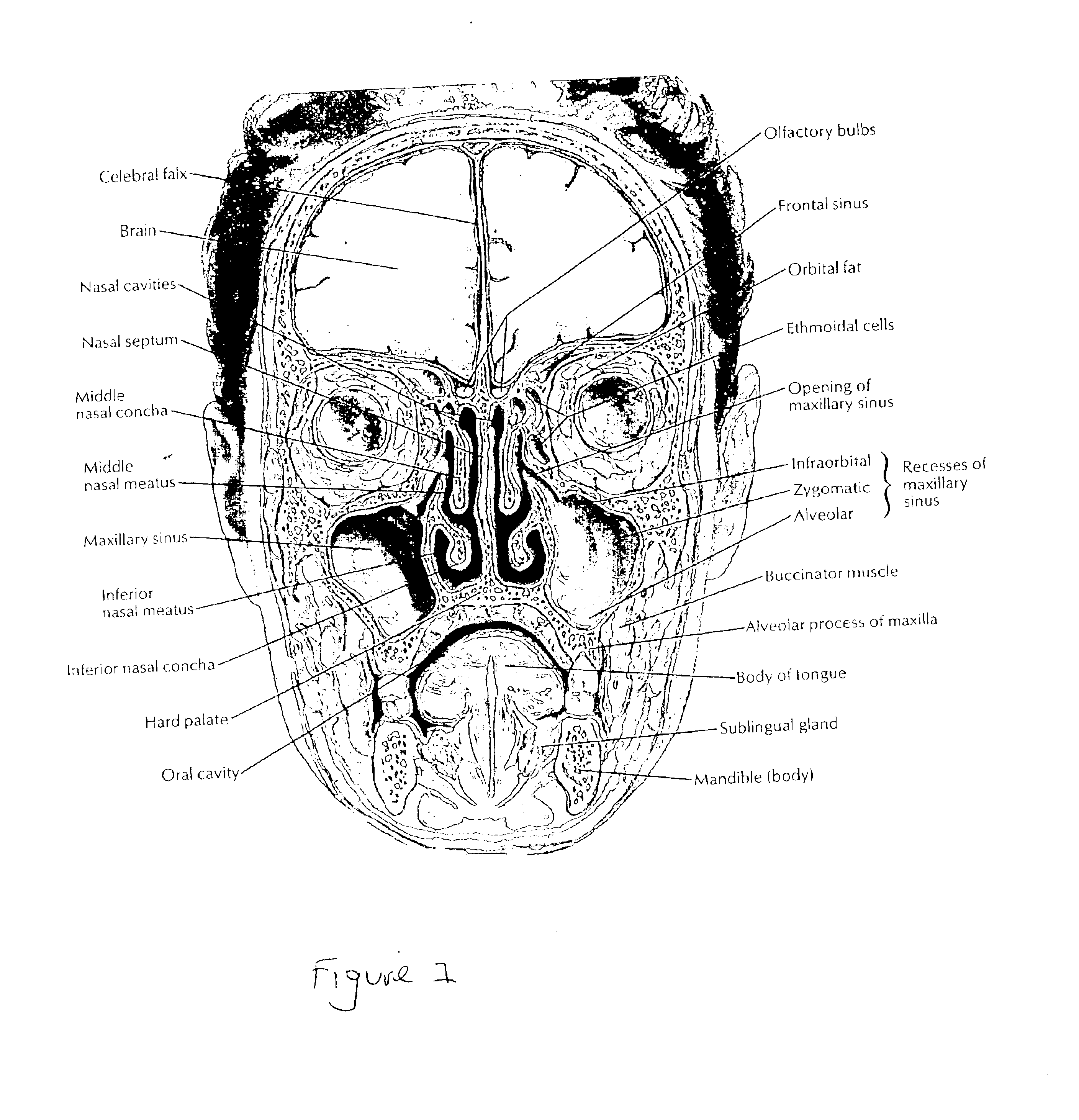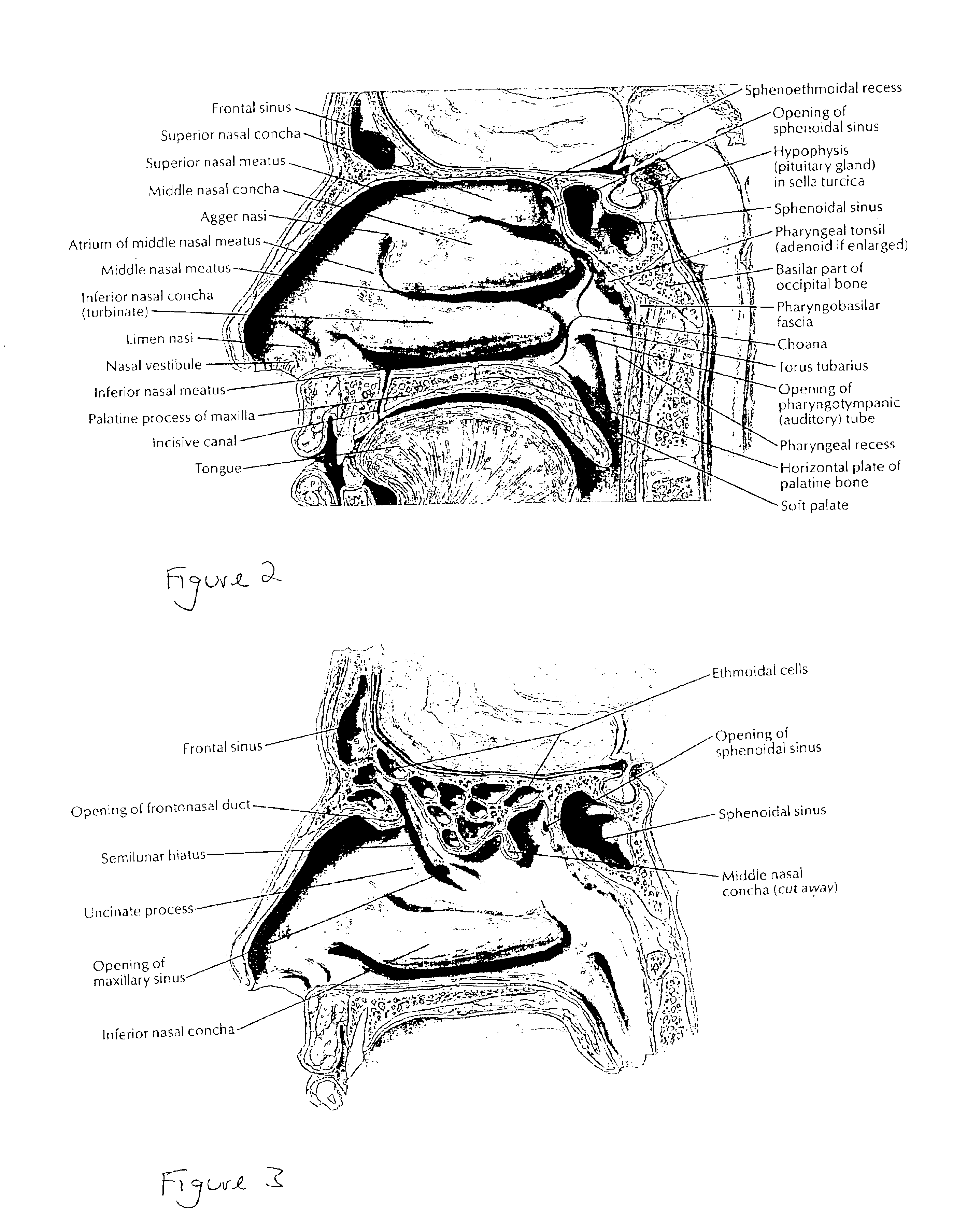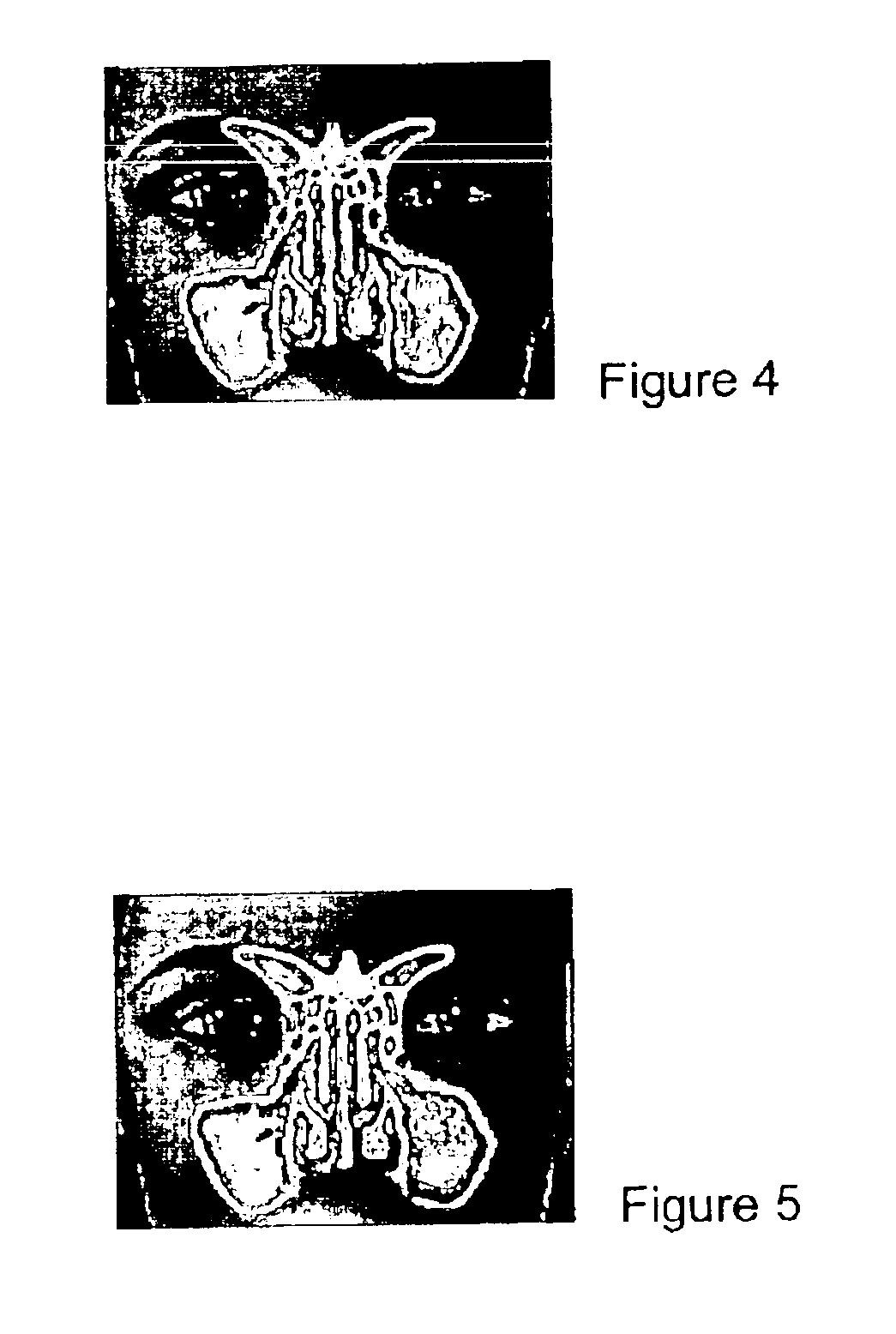Methods for treating sinus headache
a sinus headache and sinus nerve technology, applied in the field of sinus headache treatment, can solve the problems of sinus headache pain, sinus headache, pressure on the sinus wall, etc., and achieve the effect of effective treatment of sinus headach
- Summary
- Abstract
- Description
- Claims
- Application Information
AI Technical Summary
Benefits of technology
Problems solved by technology
Method used
Image
Examples
example 1
Botulinum Toxin Type A Therapy for a Sinus Headache
A female patient, 32 years old, complains of pain in the area of the paranasal sinuses. The pain is described as pain is constant, even, and not throbbing. It is not associated with nausea, light, or noise sensitivity. Sinus headache is diagnosed and the patient is treated by injection of 10 units a botulinum toxin type A (i.e. BOTOX®) into each of the glabellar, frontalis and temporalis muscles (30 units total toxin). Alternately, about 10 units of the botulinum toxin type A can be injected directly into one or more of the sinuses (see FIGS. 1-3 for the disposition of the sinuses) at the location and on the side where the pain is reported to be most intense. Within 1-7 days after the botulinum toxin administration the patient reports complete alleviation of her sinus headache pain and the alleviation of her condition can persist for 4-6 months.
A botulinum toxin type B, C, D, E, F or G can be substituted for the botulinum toxin type...
example 2
Botulinum Toxin Type B Therapy for a Sinus Headache
A male patient 28 years of age presents with a dull, deep pain in the front of his head and face. He reports exacerbation upon bending over down. There is a greenish nasal discharge, red and swollen nasal passages and a mild fever (101 degrees C.). The patient is treated by injection of 10 units a botulinum toxin type A (i.e. BOTOX®) into each of the sinus cavities. At least 10 units of the toxin can be injected into the infected left maxillary sinus. FIG. 4 illustrates an infected left maxillary sinus. If Inflammation is present an additional 5 units of the botulinum toxin can be administered. FIG. 5 illustrates a left maxillary sinus with an inflamed membrane. Within 1-7 days after toxin administration the patient reports complete alleviation of his sinus headache and the alleviation of his condition can persist for 4-6 months.
In both Examples 1 and 2, the botulinum toxin can be administered by an endoscopic sinus procedure as set...
PUM
 Login to View More
Login to View More Abstract
Description
Claims
Application Information
 Login to View More
Login to View More - R&D
- Intellectual Property
- Life Sciences
- Materials
- Tech Scout
- Unparalleled Data Quality
- Higher Quality Content
- 60% Fewer Hallucinations
Browse by: Latest US Patents, China's latest patents, Technical Efficacy Thesaurus, Application Domain, Technology Topic, Popular Technical Reports.
© 2025 PatSnap. All rights reserved.Legal|Privacy policy|Modern Slavery Act Transparency Statement|Sitemap|About US| Contact US: help@patsnap.com



